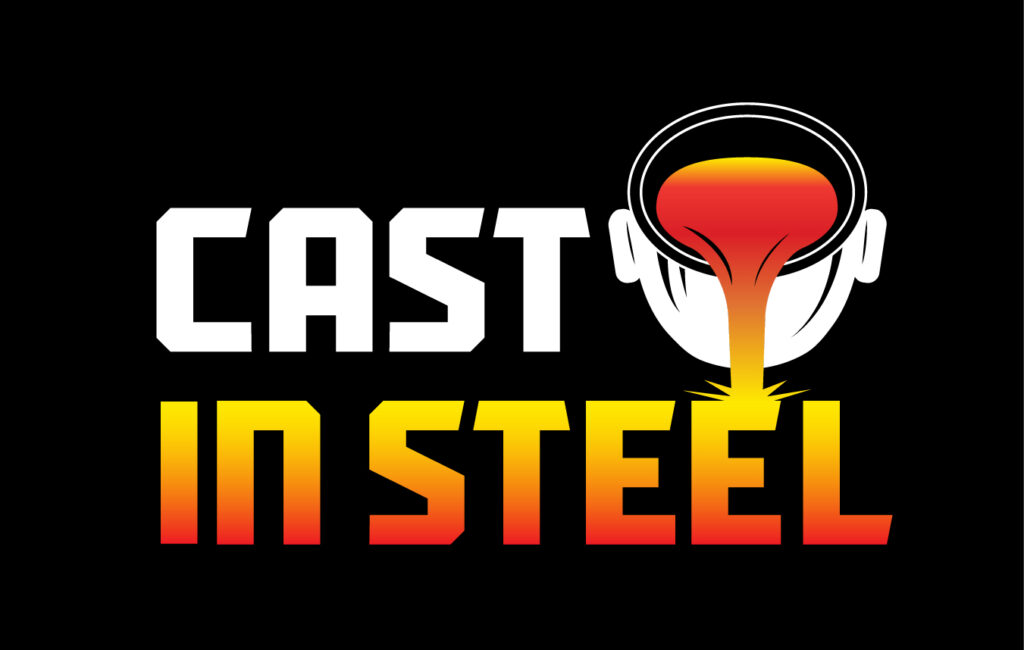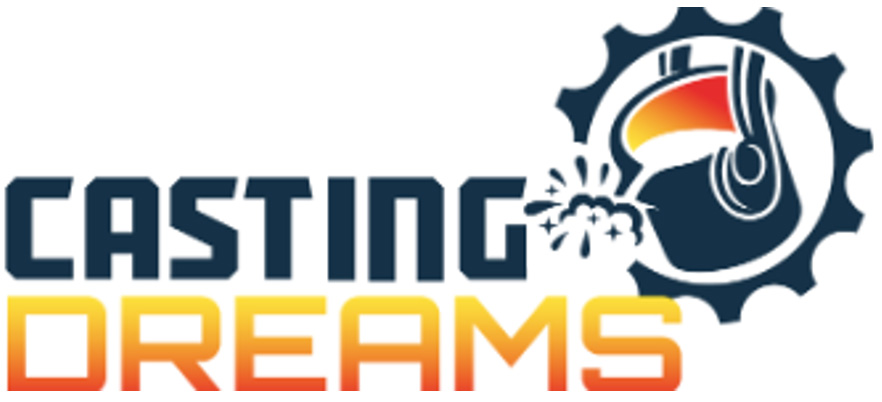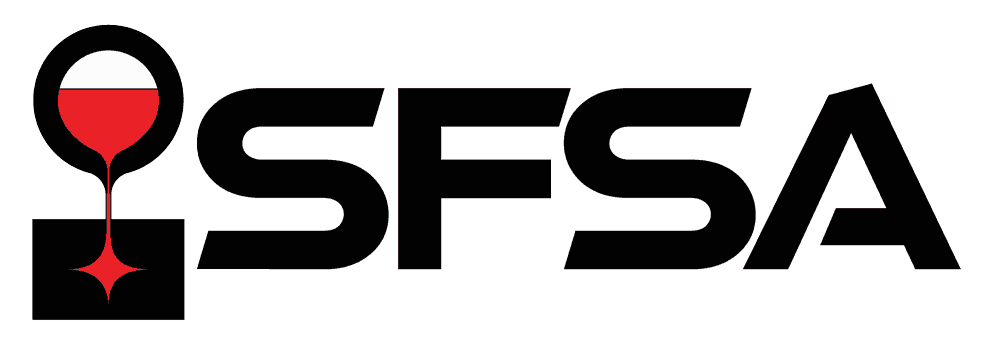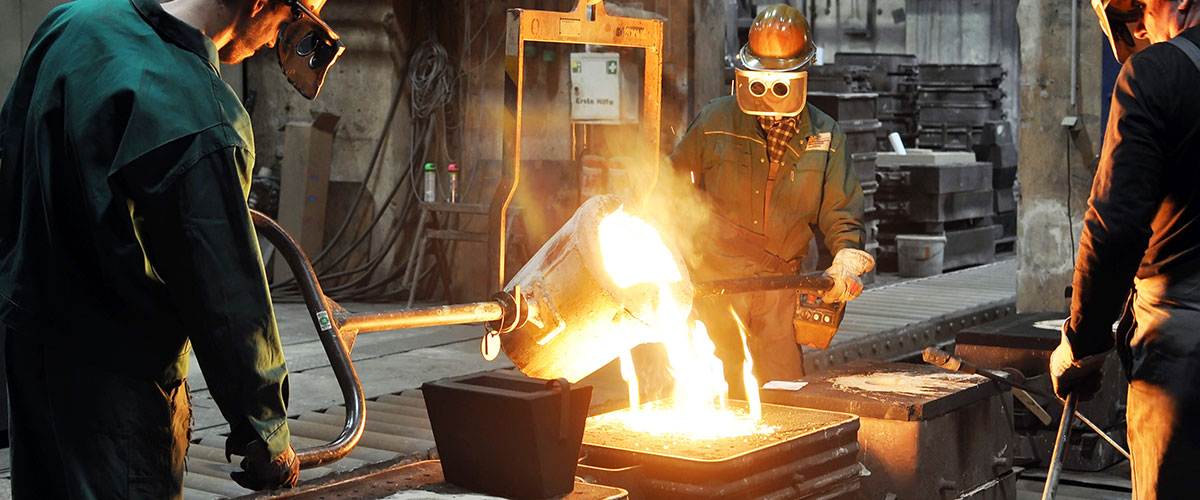Table of Contents
79th Technical & Operating Conference and Workshop
The 2025 Technical & Operating conference and workshop is less than a month away. Registration will close shortly. For assistance, please contact Renee.
OT Security Webinars
Brian Reed from Corsha gave an informative webinar on Operational Technology (OT) Security. The recording of this webinar is now available to members. Brian’s presentation was informative, provided resources and gave folks something to think about as we enter an AI era. Please contact Dave with any questions or to request additional webinar topics.
Additional Keel Bars Needed
To support the development of the SFSA carbon & low alloy atlas, we are looking for additional standard keel block legs:
- 1035, 1045, and 4330
SFSA is developing a carbon & low alloy atlas to show the effect of alloying elements and heat treating on the mechanical properties and microstructure of low alloy steels. As-cast and bars from same heat would be preferred. Heat chemistry or mechanicals would be appreciated, but not required. Please contact Caelan (ckennedy@sfsa.org) or Tory (tory@sfsa.org) for shipping details.
Cast in Steel Competition

We’re excited to share that 21 teams, almost twice as many as we had at this time last year, are officially signed up to recreate a replica Horseman’s Axe for the upcoming Cast in Steel Competition. We can’t wait to see everyone in Grand Rapids, Michigan, April 16–18, 2026!
| UNIVERSITY NAME: | FOUNDRY PARTNER |
|---|---|
| Arkansas State University | Southern Cast Products |
| California State Polytechnic University, Pomona | Aerotec |
| California State Polytechnic University, Pomona | Miller Foundry |
| Central Michigan University | BayCast in Battle Creek, Michigan |
| Central Michigan University | Bay Cast Inc |
| Ecole Nationale Supérieure D'Arts Et Métiers Campus de Cluny | Safe Metal |
| ESFF - Ecole Supérieure de Fonderie et de Forge | Ferry-Capitain |
| Ferris State University | Eagle Alloy, Inc. |
| Georgia Southern University | Georgia Southern University |
| Herron School of Art and Design, IU Indianapolis | Harrison Steel Castings Company |
| Instituto Tecnológico de Morelia | Fundidora Morelia |
| Kevin Dukes Career and Innovation Academy | TBD |
| Penn State Behrend | TBD |
| Pittsburg State University | Monett Metals |
| Texas State University | Henderson MFG |
| Texas State University | Henderson Manufacturing Co. |
| Texas State University | Henderson Manufacturing |
| University of Alabama at Birmingham | TBD |
| University of Northern Iowa | UNI Metal Casting Center and Factory 4.0 Center |
| University of Wisconsin-Madison | Signicast |
| Wentworth Institute of Technology | DW Clark |
If your foundry is interested in partnering with a team to cast their axe for the 2026 competition, please reach out to Renee rmueller@sfsa.org.
For full competition details, click HERE.
Casting Dreams Competition

The 2026 Casting Dreams season is off to a strong start with many events already scheduled, and more being added.
If you’re interested in hosting an event or sponsoring (through donations or materials), we’d love to hear from you!
Reach out to Renee Mueller at rmueller@sfsa.orgwith any questions or to get started.
Let’s keep the momentum going!
Check out the upcoming events below.
| DATE OF EVENT: | LOCATION: | COMPANY/SCHOOL/TROOP NAME: |
|---|---|---|
| 6/9/25-6/12/25 | Romeoville, IL | Joliet Junior College- Kids College |
| 6/12/25 | Crystal Lake, IL | Girl Scout Chippewa Service Unit |
| 6/28/25 | Annapolis, MD | Banneker-Douglass-Tubman Museum |
| 7/21/25-7/24/25 | Joliet, il | Joliet Junior College- Kids College |
| 9/26/25-9/27/25 | Birch Run, MI | Frankenmuth Arts Council |
| 10/4/25 | Crystal Lake, IL | McHenry County College - Kids and College Program |
| 11/4/25 | Louisville, OH | Louisville High School |
| 1/17/26 | Johnstown, PA | National Center for Defense Manufacturing & Machining (NCDMM) |
| 2/7/26 | Crystal Lake, IL | McHenry County College - Kids and College Program |
| 2/23/26 | Waterloo, IA | Highland Elementary |
| 2/24/26 | Waterloo, IA | Irving Elementary |
| February | Decatur, IL | Decatur Agriculture Academy |
| February | Morro Bay, CA | Morro Bay High School |
| February | San Luis Obispo, CA | Laguna Middle School |
| February | Westlake Village, CA | Oaks Christian High School |
| February | Rancho Cucamonga, CA | Los Osos Middle School |
| TBD | Milwaukee, WI | Deer Creek Intermediate School |
| TBD | Brooklet, GA | Bulloch High School |
| TBD | Williamsburg, VA | Williamsburg Christian Academy |
| TBD | Crookeville, TN | Tennessee Tech University |
| TBD | Putney, VT | The Putney School |
Market News
ITR reports that despite the delay in August new orders data due to the U.S. government shutdown, their outlook remains anchored in leading indicators, economic fundamentals, and business cycle theory, supported by timely production data that includes the latest August updates. Although performance continues to vary across sectors with some pockets of weakness, the overall trajectory points to steady upward momentum heading into 2026. Opportunities remain strongest in defense and technology, while Heavy-Duty Truck Production continues to lag.
US mining production is expected to follow a generally positive trajectory through 2026 before entering decline, while oil and gas extraction production will see a muted but sustained rise at least into 2027. Construction machinery new orders are projected to climb through 2027 aside from a brief dip in early 2027, and defense capital goods new orders will trend upward through 2027 with a short plateau in mid-2026, supported by ongoing geopolitical tensions. Broader machinery new orders are also poised to rise through 2026, backed by improving industry utilization rates and elevated commodity prices.
We need your input!
The SFSA Marketing Committee will be meeting next month prior to the SFSA T&O Conference to finalize the 2026 SFSA Market Forecast. The committee would appreciate receiving your input on the markets that you serve in support of the forecast. Please take a moment to complete the market forecast survey: https://www.surveymonkey.com/r/SFSA_4Cast26. Responses are kept confidential and will be aggregated with other member responses. Markets included in the forecast are as follows:
Markets
- Rail/Transit – frames, couplings, bolsters, track components, etc.
- Mining Equipment – axle housing, frame components, suspension, gear case, etc.
- Mining Consumables – G.E.T., liners, hammers, grate plates, cement and aggregate components
- Construction Equipment – axle components, sprocket, end caps, transmission housing, etc.
- Truck – Class 8 – suspension brackets, brake components, axle spindles, fifth wheels, etc.
- Pump – housing, impeller, covers, bowls, etc.
- Valve – strainer bodies, bonnets, butterfly valves, etc.
- Oil & Gas – port adapters, brackets, levers, slip linkages, etc.
- Military – ground vehicle and maritime components
- Industrial Furnace & Oven Mfg. – furnace, heat treat, steel mill components – rollers, links, baskets, etc.
- Industrial Machinery – Industrial equipment parts – pulp & paper, food, shotblast – plates, wheels, sprockets, flanges
SFSA Business Trends
To benchmark your facility with other steel foundry members, SFSA encourages you to participate in the monthly SFSA business trends survey – only participants have access to the results. The quarterly data will no longer be included in the Casteel Reporter. Please complete the business trends survey for September 2025: https://www.surveymonkey.com/r/SFSA_BTB_Oct25. Survey results are provided to participants the following month.
SFSA Business Report
Due to the government shutdown, Department of Commerce has not been updated. SFSA will resume business report data in the January Casteel Reporter.
Casteel Commentary
Regularly for the past years, I have posted commentary based on an analysis of the challenges we face as an industry. My core idea is that our commercial practices and public policy have limited our industry, our suppliers, and customers, so that we have been inadequately profitable to make the investments in modernization and innovation needed for our national and economic security. Many of these documents started life as input to DoD on the situation and limits of castings and forgings for their needs. At this time, we may be rapidly (or more slowly) approaching a time where this becomes evident or even compelling and forces changes. Our industry leaders recognize this and have instigated a survey to members in the U.S. on what changes we need. We expect these changes will benefit not only U.S. members but our entire industry including other North American members and others.
Q1. What are the primary challenges our industry faces in maintaining competitiveness, modernizing operations, and driving innovation?
In the U.S.as capital intensive manufacturers, we are as efficient in the direct cost of casting production and can meet the most advanced requirements. Our challenge is that our total cost is the highest globally. We are 20% more expensive that our developed competitors and 40% more expensive that the developing producers. These added costs (our value added?) are external public policies and commercial practices. This question is an effort to identify these challenges and costs. How burdensome are the mandatory reporting and training for safety and environmental regulations that provide no improvement? How can we change the regulatory framework to encourage better performance instead of costly bureaucratic liabilities? How can we update the tax code to make capital investment in the U.S. attractive to investors and owners? How do we reshore the production and capability of our suppliers and customers?
Q2. In what ways could tax policy be structured to encourage domestic investment and production?
(Examples: depreciation, investment tax credits for capital investment, etc.)
Depreciation limits capital investment because the most profitable years cannot make the discrete investments in that year. The tax system has led many great investments to compromise the company with equipment leases that continue to be costs in bad business years. The profits in good years are taxed at rates that limit the funds available for investment.
Instead of a tax code that discourages capital investment, since we need capital investment to sustain the whole industry, we should have investment tax credits beyond the elimination of depreciation. If capital intensive industries are essential to security, we need to make these investments profitable by changes in our policies.
Utilities like electrical power are necessary but are organized to be profitable and able to have long-term investments to ensure higher quality, lower costs and adequate supply.
Q3. Which regulatory requirements present the greatest challenges or inefficiencies?
(Examples: mandatory environmental or safety reports and records, training, penalties for paperwork failures that are not corrupt, tax credits for training, tax credits for safety or environmental performance, tax credits for skills training, etc.)
Regulations for our type of industry have been estimated to cost from $15 to 50k per employee a year. The massive reporting and training burden that has little to do with environmental performance or workplace safety are costs that provide no value to anyone but the regulators. Paperwork audits are not directed to ensure good practices but to identify regulatory violations.
Q4. How can we strengthen domestic markets for both suppliers and customers?
(Examples: Policies as above that apply to our suppliers and customers, incentives to have domestic supply chain capabilities, tax benefits for domestic investment for supply chain enhancement, tariff policies that enable competitive supply chains and not only discrete segments, etc.)
A major problem we face is that these burdens have hollowed out our suppliers and customers as well. How can the system change to allow collaboration without antitrust issues? What incentives could be put in place to encourage integrated long term supply chains that allow for investment and profitability>
Q5. What role can tariff policy play in supporting and sustaining our industry?
Individual steel product tariffs have aided steel mill producers but were a factor in the offshoring of our customers and suppliers. Most of the rest of the world have a tax system that is border adjustable, a value added tax. This has a tariff life effect in advantaging domestic production and making industry more cost competitive. Other tariff structures seek to support domestic production by tariffs based on environmental performance of the country of production. Th EU has adjustments for climate impact for imported goods.
I hope this commentary stirs up some strong emotions and gets you to take the survey. We need your thoughts and especially your ideas on the changes that could help our industry profit and grow!
Steel Casting Industry: Modernization and Policy Priorities Survey: https://www.surveymonkey.com/r/D27SLSY
Raymond

